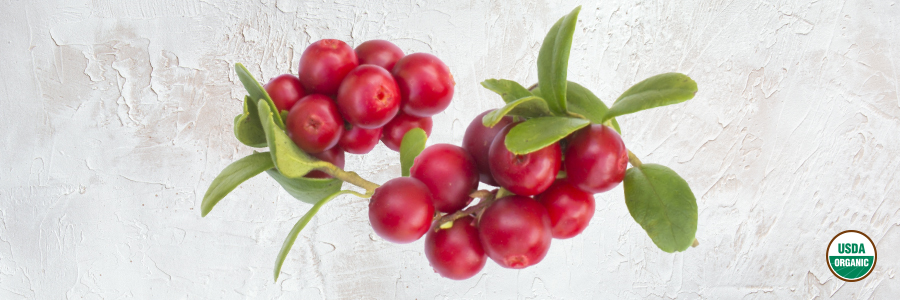


Sign-up for {N}power to get exclusive discounts, newsletters, members-only features, and more!

They each made it with a twist: one with pineapple, the other added vanilla, and sometimes a dash of bourbon. Cranberry sauce, grandma’s special recipe—it was a tradition to be enjoyed once or twice a year, with the whole family gathered around the table. The deliciously unique flavor of each version is evocative of the woman herself, a memory that lives on with every subsequent rendering of the recipe.
It’s effortlessly nostalgic—the cranberry, a yearly reminder of holiday seasons past and present, but what impact does its journey to the festivities have on the planet?

In Wisconsin and Massachusetts, the two top cranberry-producing states, thousands of red berries float in flooded beds waiting for harvest in the fall.1 2 The whimsical imagery invites many a road trip along Wisconsin's "Cranberry Highway" or to Cape Cod.3 4 However, this unusual harvest technique, using water to separate the berries from their vines, also raises the question of synthetic pesticide and fertilizer pollution in local waterways.5 6 Although a conclusive answer is hard to find, this much is true: farmers must release the water used in the cranberry harvest back into the environment. And several studies over the past decade indicate that it may carry a significant load of toxic agricultural chemicals with it.7 8 9
A 2014 VICE News article cites a Wisconsin study finding that pesticide concentrations downstream from cranberry marshes were enough to cause “total mortality in two species of test organisms,” which has alarming real-world implications. In 2018, the Buzzards Bay Coalition in Massachusetts, citing data from the Massachusetts Estuaries Project, reported that cranberry bogs were responsible for an estimated 20 and 30 percent of nitrogen pollution in two of this cranberry-growing region’s rivers.10 An earlier report noted that where the density of bogs is highest, they could be accountable for up to 50 percent of nitrogen pollution, contributing to oxygen-deprived water where aquatic organisms cannot live.11
Without bees to pollinate cranberries, every treasured family recipe featuring them vanishes. The fruit depends on the insect for survival, and although honeybees are an indispensable part of the equation, native bees like bumblebees are the most efficient cranberry pollinators.12 13 14 Yet, according to USDA tests, 56 percent of conventional cranberries had residue of the fungicide chlorothalonil, and studies show it may pose a severe threat to bumblebees.15 Researchers from the University of Wisconsin and subsequently Cornell University found evidence that chlorothalonil exposure has a range of negative impacts on native bumblebees. These include the “potential to severely impact their success in foraging,” and being a strong predictor of pathogen prevalence in declining bumblebee species.”16 17 Meanwhile, as of May 2020, the European Union has banned chlorothalonil because of the DNA damaging potential of its breakdown chemicals and its adverse consequences to wildlife.18
Cranberries are one of the richest sources of polyphenols, a group of plant compounds with potent antioxidant properties, and they’re also a good source of vitamin C.19 Choose organic to maximize nutritional benefits.20 21 A 2014 meta-analysis, published in the British Journal of Nutrition, and analyzing data from more than 300 studies on the subject, found that organic crops outdo conventional in antioxidant content by 20 to 40 percent!22 So here’s to organic, to old and new traditions, and the memories that give them meaning, and to serving the season’s brightest berry with a twist. Happy Holidays!
We are excited to share Margaret Isely's beloved family recipe with you, and maybe even inspire a new family tradition of your own.
SEE RECIPE



Sign-up for {N}power to get exclusive discounts, newsletters, members-only features, and more!